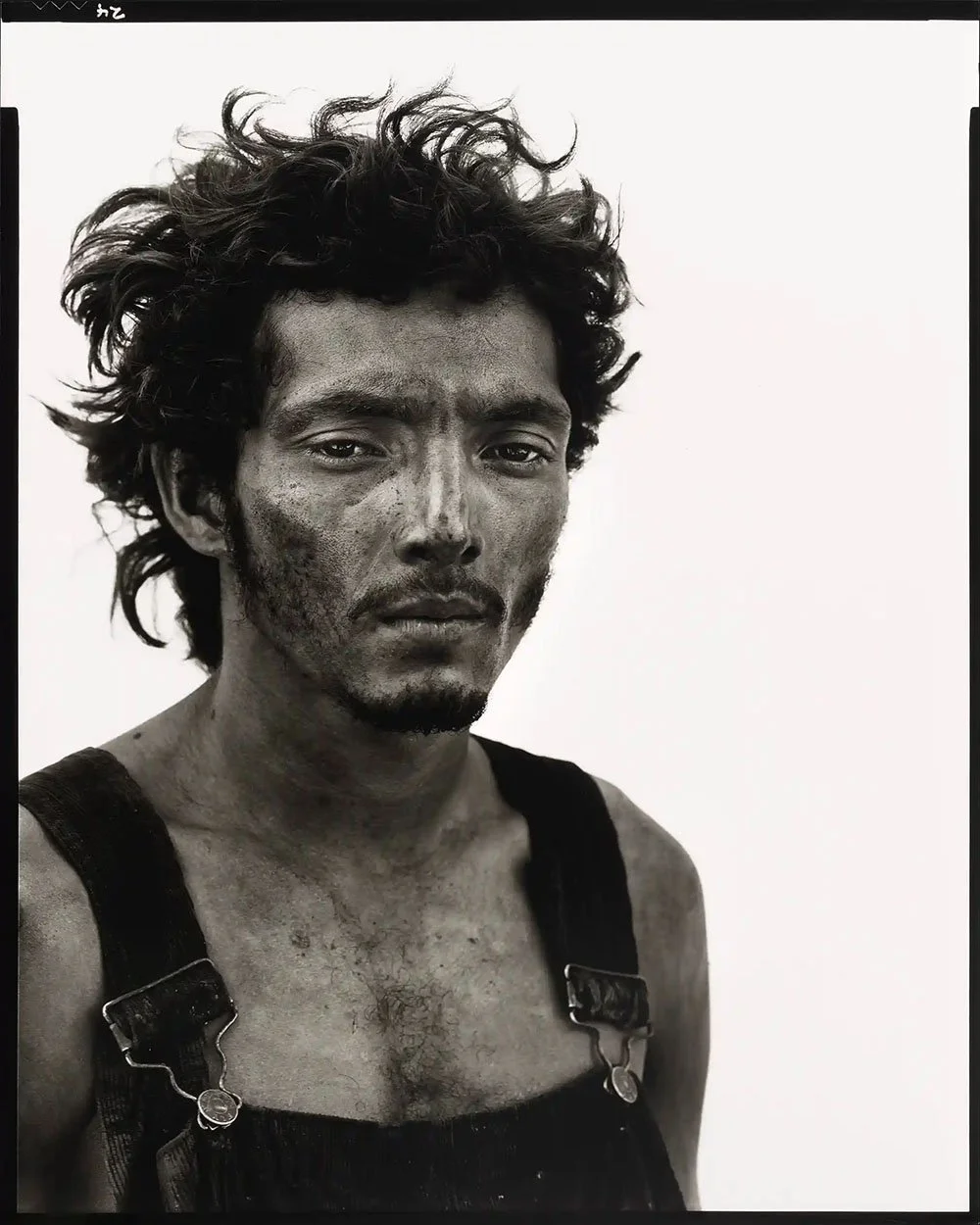showing that film edge told you that that was all there was ...
I think about photographers that have had a very discernable look – you know I think about Avedon a lot and the idea of him making those portraits, for example, In the American West. The rebate was a big part of those images and it really allowed those images to have a really graphic nature to them that … ultimately that showing that film edge told you that that was all there was … and, on the planet, that was the thing I chose to show you that day.
Dan Winters interviewed by Ibarionex Perello for the Candid Frame podcast #85.
In the American West
I feel we're deserting him ...
"We come and we leave. We take our pictures and go. I feel we're deserting him. I wish I'd never stopped photographing the people we met. I wish I could have stayed with the project my whole life."
Richard Avedon after a 2003 reunion meeting with Richard Wheatcroft, a subject Avedon first photographed in 1983 for In the American West.
Downtown
Like and animal and a prey — vroom!
And at the same time, when something happens, you have to be extremely swift. Like an animal and a prey — vroom! You grasp it and people don’t notice that you have taken it. Very often in a different situation, you can take one picture. You cannot take two. Take a picture and look like a fool, look like a tourist. But if you take two, three pictures, you got trouble. It’s good training to know how far you can go. When the fruit is ripe, you have to pluck it. Quick! With no indulgence over yourself, but daring. I enjoy very much seeing a good photographer working. There’s an elegance, just like in a bullfight.
Henri Cartier-Bresson: Living and Looking
from a recently discovered 1971 interview by Sheila Turner-Seed
19th Century British Photography at the Art Gallery of Alberta
Photography is a marvellous discovery ...
Photography is a marvelous discovery, a science that has attracted the greatest intellects, an art that has excited the most astute minds—and one that can be practiced by any imbecile … Photographic theory can be taught in an hour, the basic technique in a day. But what cannot be taught is a feeling for light … It is how light lies on the face that you as artist must capture. Nor can one be taught how to grasp the personality of the sitter. To produce an intimate likeness rather than a banal portrait, the result of mere chance, you must put yourself at once in communication with the sitter, size up his thoughts and his very character.
Nadar (Gaspard-Félix Tournachon)
Quoted in the biography Nadar by Jean Prinet and Antoinette Dilasser
Worlds in a Small Room
there was for us both the possibility of contact ...
On the early trips, he adapted existing spaces like a garage or a barn to his needs, and noted the crucial role of a neutral environment to encourage the respectful exchange he was interested in. Eventually this led him to construct a tent studio that could be dismantled and taken from location to location. Penn felt "in this limbo [of the tent] there was for us both the possibility of contact that was a revelation to me and often, I could tell, a moving experience for the subjects themselves, who without words—by only their stance and their concentration—were able to say much that spanned the gulf between our different worlds."
Biography. From the website of The Irving Penn Foundation
Women are Heros
It became easier to stay in the shadow of the work ...
It really does allow my work to stay in … I would say, semi-anonymity. When I started, it was because graffiti is illegal – you get arrested. And then suddenly when I started pasting other people’s portraits on the street it was as if I was writting their name – so why would I put my name up? And then I guess I realized it became easier to stay in the shadow of the work.
JR interview with Kristie Lu Stout.
Alexey Brodovitch’s Ballet
Brodovitch had no interest …
Following the blurring of his first photographs Brodovitch might have turned to any vaiety of flash techniques, including Dr. Harold Edgerton’s recently introduced electronic flash, as did Barbara Morgan and Gjon Mili in their own dance photographs at this same time. But Brodovitch has no interest in arresting motion; he knew that the animal vitality and the suggestive power of the dancers’ movements were at the very heart of ballet’s unique stage atmosphere. In a leap of imagination, he suddenly saw the “mistakes” of his first photographs not as irredeemable defects, but as intriguing new possibilities. instead of eliminating them, he determined to push them even further.
Christopher Phillips
“Brodovitch on Ballet” American Photographer (December 1981).







